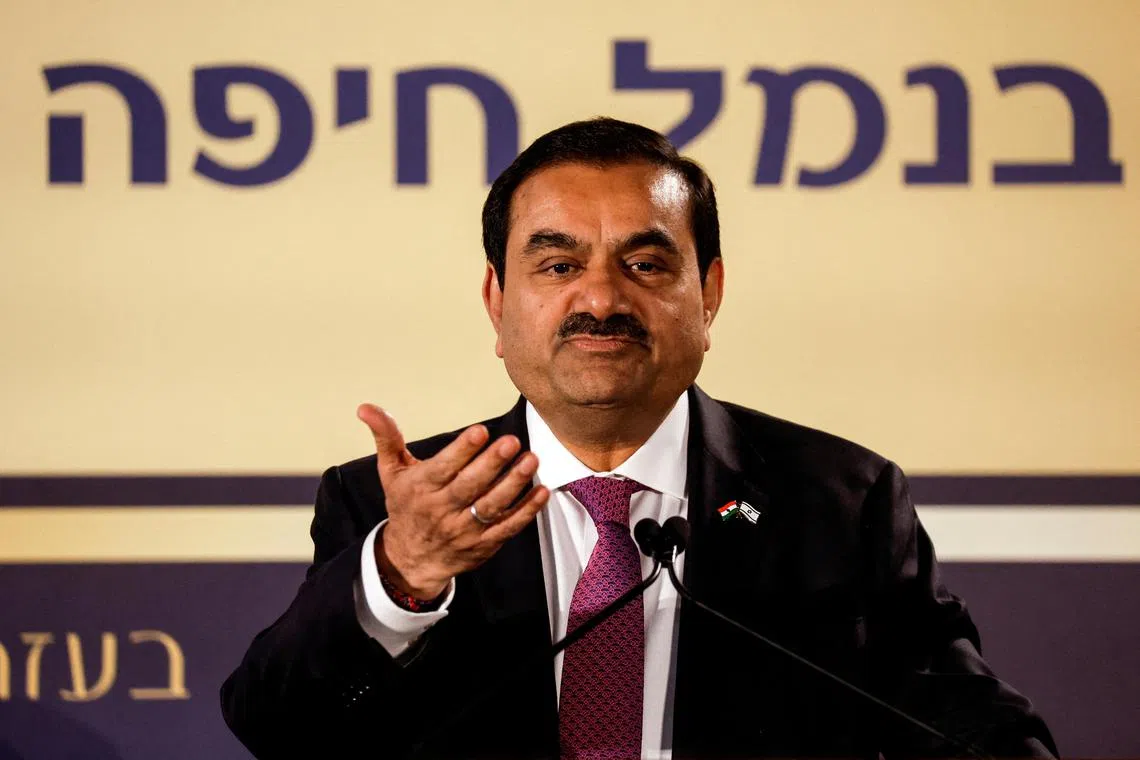Gautam Adani’s $68 billion wealth wipeout in 6 days has few parallels
Sign up now: Get ST's newsletters delivered to your inbox

Mr Gautam Adani is worth about US$61 billion, down from a peak of US$150 billion in September last year.
PHOTO: REUTERS
Follow topic:
New York – Indian tycoon Gautam Adani has seen US$52 billion (S$68 billion) erased from his personal fortune in the span of just six trading days – a downfall so spectacular that it defies just about every historical comparison.
He is not quite like one-time crypto wunderkind Sam Bankman-Fried or Archegos Capital Management’s Bill Hwang, who went from tens of billions to nothing in a flash as their leveraged trades imploded. After all, even after a share price collapse in the wake of Hindenburg Research’s short-seller report, Mr Adani oversees a sprawling conglomerate that builds capital-intensive infrastructure, such as ports and airports, in line with Indian Prime Minister Narendra Modi’s development goals.
His wealth drop is far bigger than that of Brazil’s Mr Eike Batista, who similarly used his commodities empire to build national infrastructure like shipyards and ports with support from the government. It took Mr Batista about a year to lose his entire US$35 billion fortune, becoming known as the first “negative billionaire”.
Even though fellow billionaire Elon Musk was the first person in history to lose US$200 billion
All told, Mr Adani’s wealth wipeout is among the most severe in terms of scale and speed since Bloomberg began tracking billionaires in 2012. He is worth about US$61 billion, down from a peak of US$150 billion in September, according to the index.
The precipitous fall highlights the unique ways in which Mr Adani, 60, climbed up the wealth rankings in the past two years, at one point surpassing every billionaire on the planet except for Mr Musk. Many of the tactics were flagged by Hindenburg as it alleged fraud: a large concentration of insider share ownership, rampant use of leverage, and valuations that were elevated by just about every measure.
Mr Adani has expanded his conglomerate aggressively, with a push into green energy and infrastructure in particular, securing investments from firms including Warburg Pincus and TotalEnergies. The Adani Group utilised margin loans to fund its ambitions, and had to put up about US$300 million worth of shares last week to maintain its collateral cover on a loan made by a group of banks, including Barclays.
The group has repeatedly denied Hindenburg’s allegations, calling the report “bogus” and threatening legal action. Still, its flagship Adani Enterprises scrapped a US$2.4 billion follow-on share sale that was fully subscribed but drew scant retail investor interest. Units of Credit Suisse Group and Citigroup have stopped accepting some Adani securities as collateral for margin loans.
Mr Adani, who dropped out of college to try his luck in the diamond industry, is now the third-richest person in Asia, behind peer Mukesh Ambani and China’s bottled-water king, Mr Zhong Shanshan. As at Feb 3, he has fallen out of the top 20 globally on the index. BLOOMBERG

